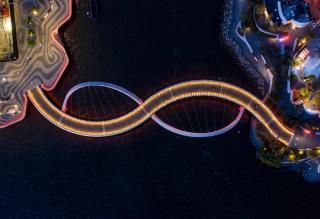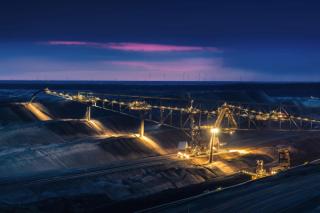SLR has significant experience across most aspects of waste transfer station design and operation. From feasibility studies and business cases through to operational plans and assessments, our team has the expertise to support the development and improvement of transfer stations from start to finish.
In this article, Andrew Quinn (Technical Director – Sustainable Waste Management) shares his insights on why transfer stations are important and the principles of a good design.
What are transfer stations?
- Transfer stations are consolidation facilities for smaller loads of waste originating from many sources into larger loads for transport to disposal or recovery facilities
- They can be as small as just couple of bins right up to very large facilities
- They can manage as little as a few hundred tonnes of waste up to hundreds of thousands of tonnes plus a wide range of other recoverable materials
- Transfer stations are not designed for long-term waste storage
Why are transfer stations important?
- Enable screening of waste to improve recovery and reduce contamination
- Allow hazardous and dangerous materials to be identified and intercepted
- Reduce transport costs
- Provide local community facilities and are more convenient for customers
- Are safer, more pleasant facilities than landfills
The principles of good transfer station design include:
- One way traffic flow
- Recovery facilities located before disposal areas
- No crossing of traffic, no intersections
- Small vehicles and heavy vehicles are kept separate
- Moving plant and customers are kept separate
- No possibility for falls from heights
Ensure that there is space for vehicles reversing
In addition to the essentials, some nice to haves include:
- Variable charging of customers for different types of waste
- A weighbridge
- Under cover disposal areas
- Security features including gates, fences, lights and CCTV (closed circuit television)
- A gatehouse with traffic visibility
- Queueing space for customers and their vehicles
- A bypass lane so customers can exit quickly if they don’t need to pay any more
- Enough space for bins, plant and heavy vehicle manoeuvring
In summary, there are a number of considerations to keep in mind when designing a transfer station:
- It is very difficult to design the ideal transfer station
- There are often constraints that require compromises
- Common constraints include:
- Site size and shape
- Existing infrastructure
- Location
- Vehicle access points
- Neighbours
- Quantities
- Types of materials
- Client’s wants
- Cost
- Topography
How SLR can help
Our Sustainable Waste Management team has experience in concept design development and master planning for waste transfer stations and waste management facilities in general. SLR can prepare simple concept plans through to 3D images. Our experts also prepare business cases for transfer stations, site operation plans, tender and contract documentation, and research transfer station handling and storage technology. We can provide the expertise needed to see transfer station projects through from beginning to end and enlist assistance from our other technical disciplines to deliver the project as required by our clients.
For any further information, please contact Andrew Quinn.




